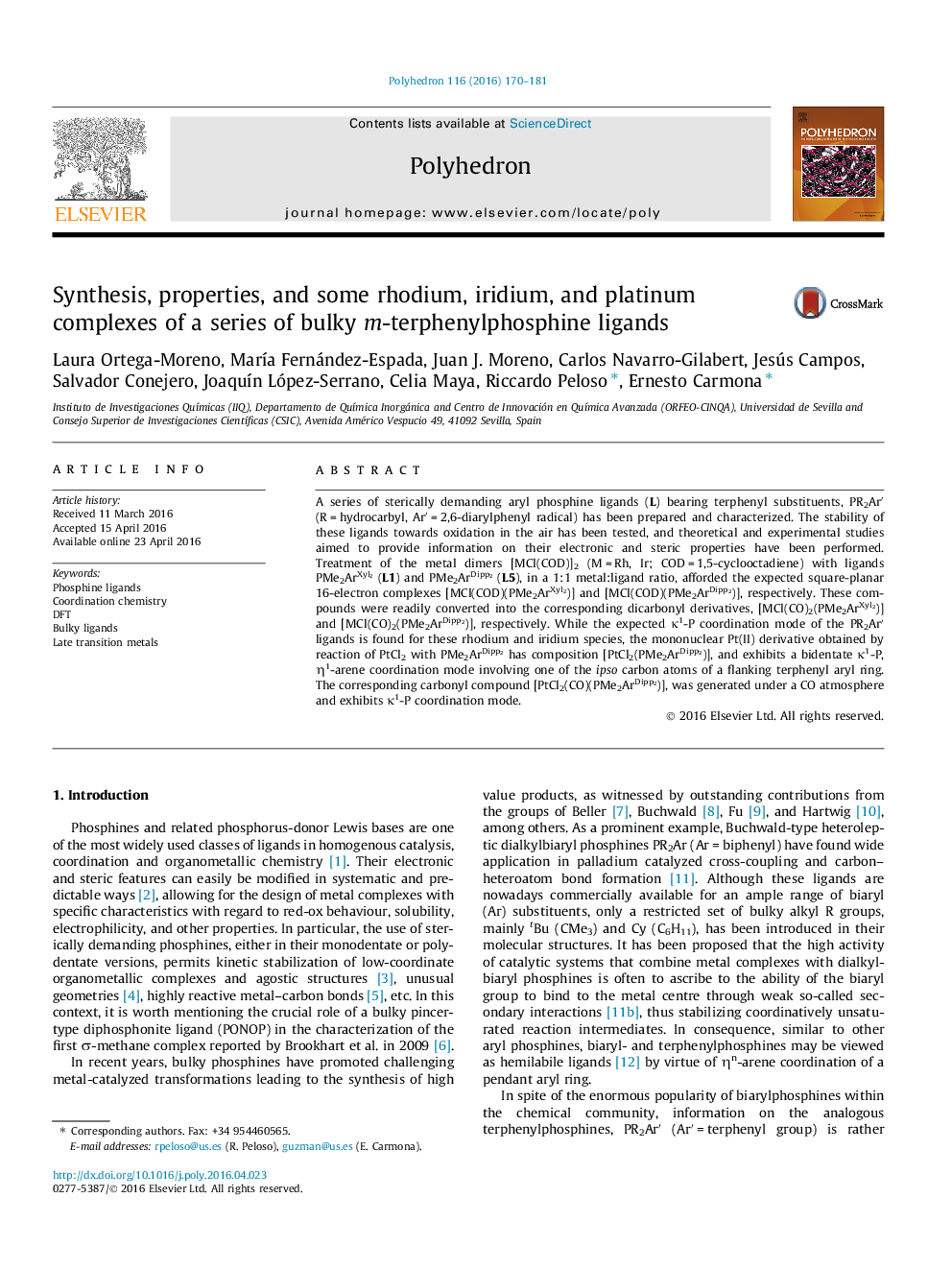| Article ID | Journal | Published Year | Pages | File Type |
|---|---|---|---|---|
| 1335023 | Polyhedron | 2016 | 12 Pages |
A series of sterically demanding aryl phosphine ligands (L) bearing terphenyl substituents, PR2Ar′ (R = hydrocarbyl, Ar′ = 2,6-diarylphenyl radical) has been prepared and characterized. The stability of these ligands towards oxidation in the air has been tested, and theoretical and experimental studies aimed to provide information on their electronic and steric properties have been performed. Treatment of the metal dimers [MCl(COD)]2 (M = Rh, Ir; COD = 1,5-cyclooctadiene) with ligands PMe2ArXyl2 (L1) and PMe2ArDipp2 (L5), in a 1:1 metal:ligand ratio, afforded the expected square-planar 16-electron complexes [MCl(COD)(PMe2ArXyl2)] and [MCl(COD)(PMe2ArDipp2)], respectively. These compounds were readily converted into the corresponding dicarbonyl derivatives, [MCl(CO)2(PMe2ArXyl2)] and [MCl(CO)2(PMe2ArDipp2)], respectively. While the expected κ1-P coordination mode of the PR2Ar′ ligands is found for these rhodium and iridium species, the mononuclear Pt(II) derivative obtained by reaction of PtCl2 with PMe2ArDipp2 has composition [PtCl2(PMe2ArDipp2)], and exhibits a bidentate κ1-P, η1-arene coordination mode involving one of the ipso carbon atoms of a flanking terphenyl aryl ring. The corresponding carbonyl compound [PtCl2(CO)(PMe2ArDipp2)], was generated under a CO atmosphere and exhibits κ1-P coordination mode.
Graphical abstractA series of bulky phosphine ligands bearing terphenyl substituents (PR2Ar′) has been prepared, characterized, and used for the synthesis of some coordination compounds of Rh(I), Ir(I), and Pt(II). While the expected κ1-P coordination mode is found for rhodium and iridium species, the dichloride phosphine Pt(II) derivative obtained by reaction of PtCl2 with PMe2ArDipp2 exhibits a bidentate κ1-P, η1-arene coordination mode.Figure optionsDownload full-size imageDownload as PowerPoint slide
